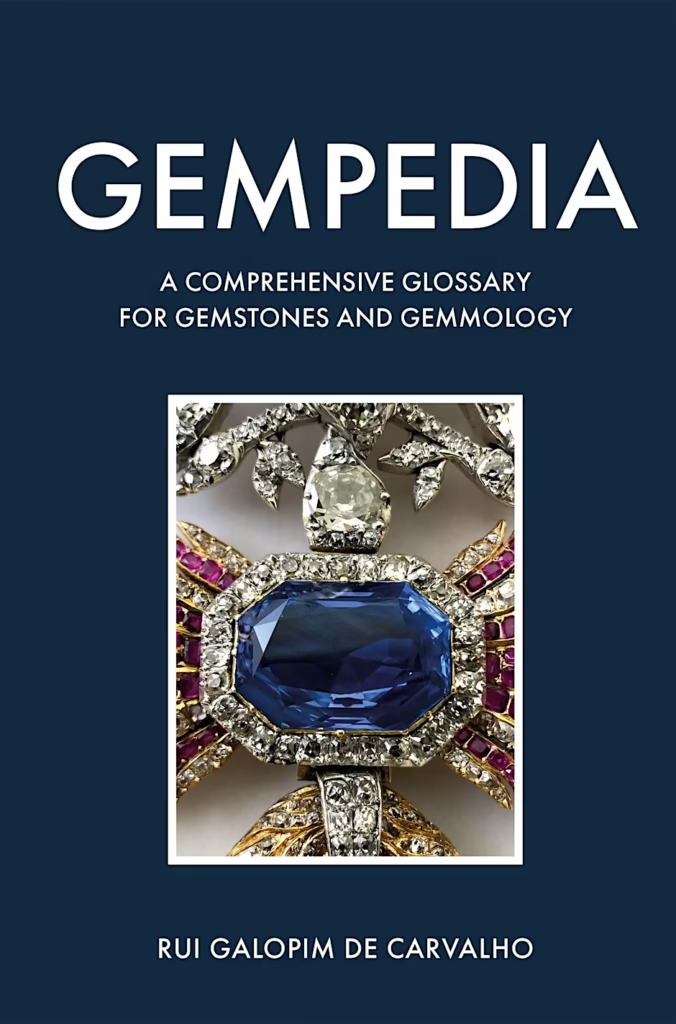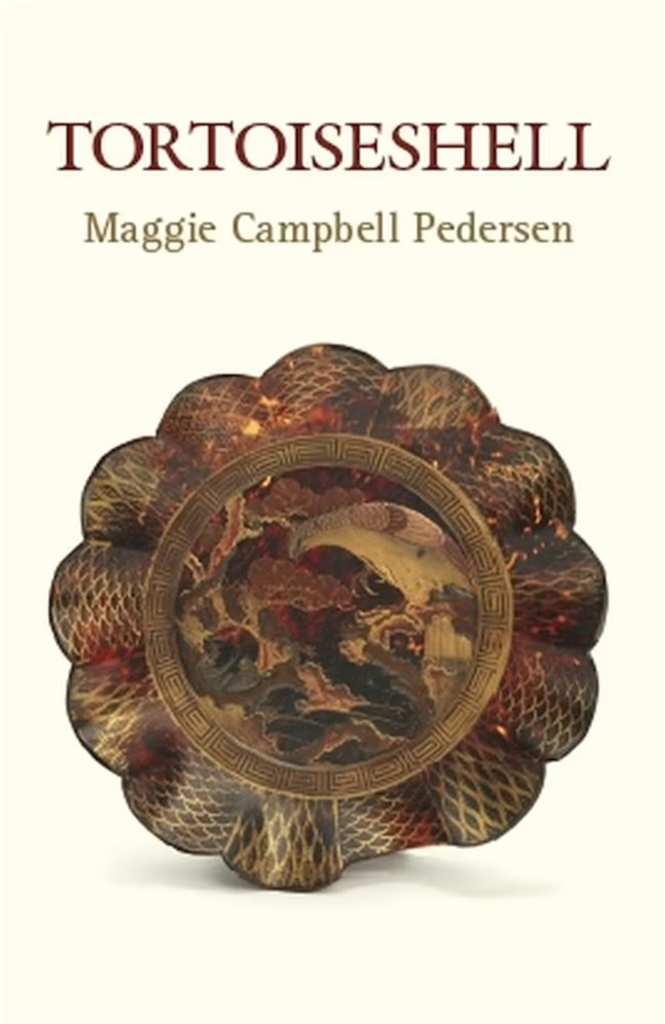
Finding natural yellow citrine is a challenge
Although citrine gemstones are abundant in jewellery, it’s unusual to find natural yellow citrine on the market. Here, we explore the causes of colour in rare natural citrine, its properties, localities, and the testing methodologies gemmologists can use to pinpoint this quartz variety in the field.
Quartz (silicon dioxide) is the second most abundant mineral on the Earth’s lithosphere after feldspar. It comes in many varieties; some quartzes are single crystals (macrocrystalline), and others are aggregates of crystal grains (polycrystalline). Quartz, when colourless, is called rock crystal. There are, however, many types of coloured quartz, each bearing a different name depending on their colour: amethyst (purple), smoky quartz (brown), and prasiolite (green). One of the rarest of all the macrocrystalline varieties is natural yellow citrine.
What is Citrine? Names and Misnomers
The term ‘citrine’ was used by the German mineralogist Georg Bauer in his seminal publication De Natura Fossilium in 1546: “There is another variety of quartz (…), and when turned towards the light, it has a colour as yellow as citron. For this reason, gem dealers call it citrina.” This is the first recorded occurrence of the name citrine being aligned to yellow quartz.
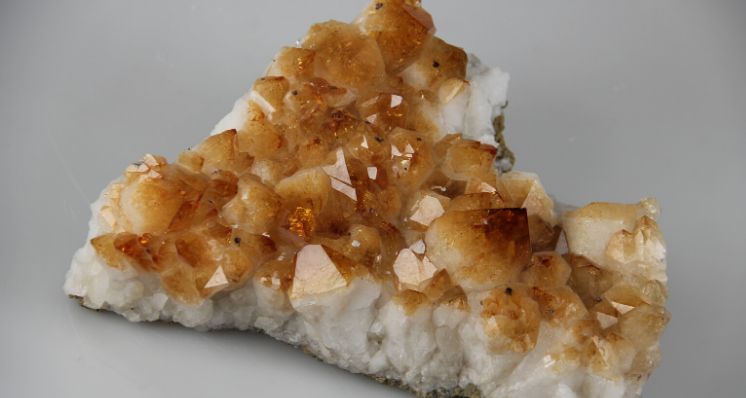
Citrine crystals from the Gem-A Gemstones & Minerals Collection.
Generally speaking, the yellow colour is the main visible definer of citrine. There are, however, great variations in hue, tone and saturation, from a reddish-brown colour to a greenish-yellow colour, via all shades of orange and yellow. Today it is one of the most popular yellow gemstones and the birthstone for November, with a saturated reddish-orange colour being most prized. Colour variations can be sold under different trade names: Golden citrine, Lemon quartz (lack of orange, with a greenish tint), Madeira citrine (brownish to orange-red), Palmeira citrine (bright orange tint) and many more.
Citrine, like most yellow gemstones, has also for a long time been confused with topaz because of its similar colour. It has, therefore, sometimes been falsely named topaz or golden topaz.
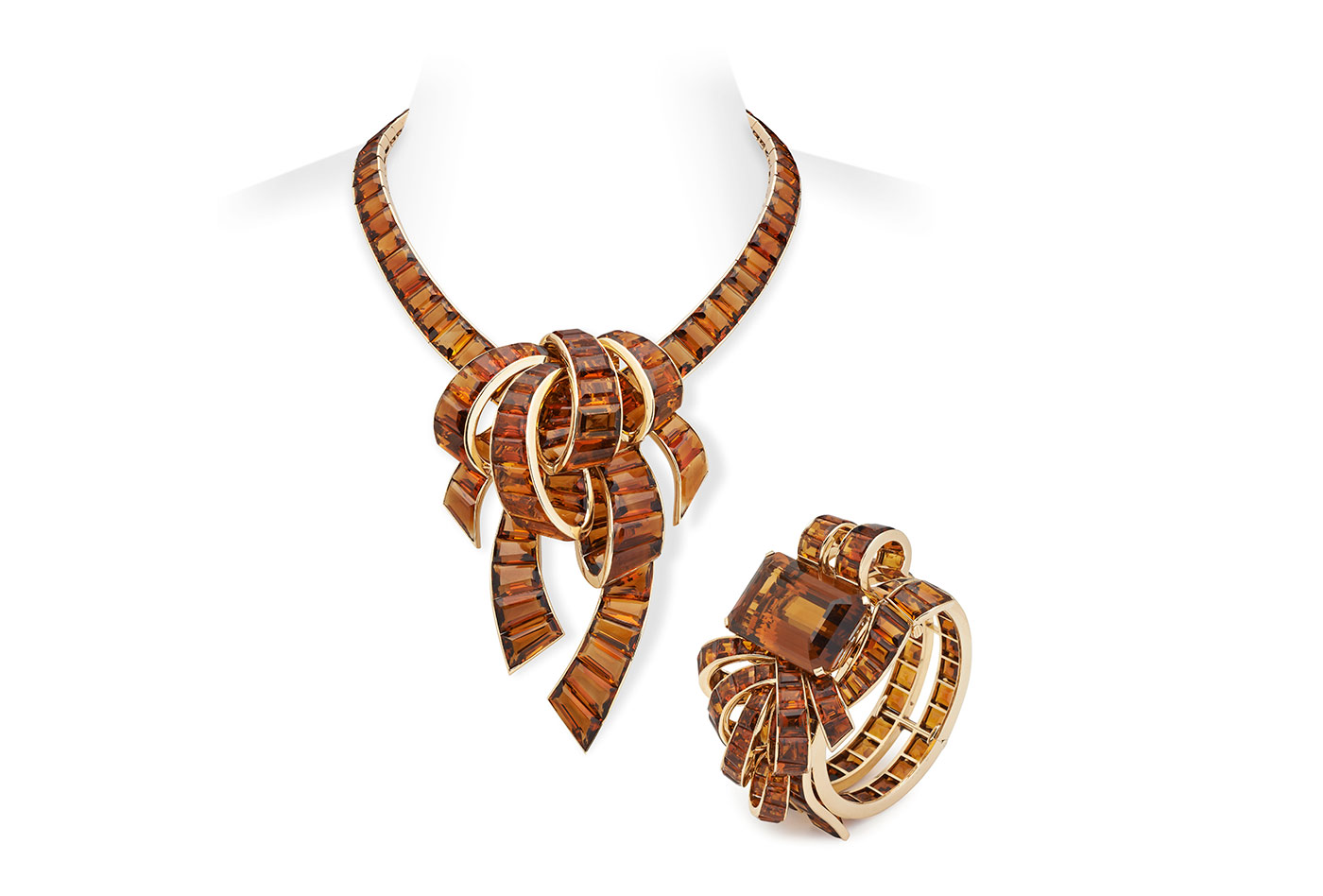
Trabert & Hoeffer-Mauboussin transformable necklace and bracelet with channel-set citrines in yellow gold. Image from KaterinaPerez.com.
Citrine has been used in jewellery for centuries. Greek and Roman lapidaries have used citrines to carve cameos and intaglios. Citrine became more prevalent in jewellery once deposits of amethyst were found in Brazil in the early 19th c. because these citrines were simply heat-treated amethysts. Today, most of the ‘citrines’ on the market are amethysts that have been heat-treated to change their purple colour to yellow. Smoky quartz can also be irradiated to a pale greenish-yellow colour, often called lemon quartz.
Causes of Colour: Types of Citrine
The causes of colour in natural citrine are still debated and complex, and this yellow colour does not often occur naturally. However, three potential causes of colour are outlined below:
The first possible cause of the yellow colour in citrine is linked to the presence of traces of aluminium in its chemistry together with some level of irradiation in the ground. Natural irradiation can create an electron-hole colour centre (a defect in the crystal structure). The irradiation of quartz causes electrons to be ejected from some oxygen atoms. Combined with the presence of aluminium, this creates an absorption of light and can produce a yellow colour. It is very similar to the cause of colour in smoky quartz. Due to the similarities, there can be a slow gradation between smoky quartz and citrine, with some citrines displaying a smoky yellow or smoky orange colour. The reason for this is not fully explained. Still, it seems that the ratio of aluminium and lithium in a mineral’s structure could explain the presence or absence of the smokiness in its colour.
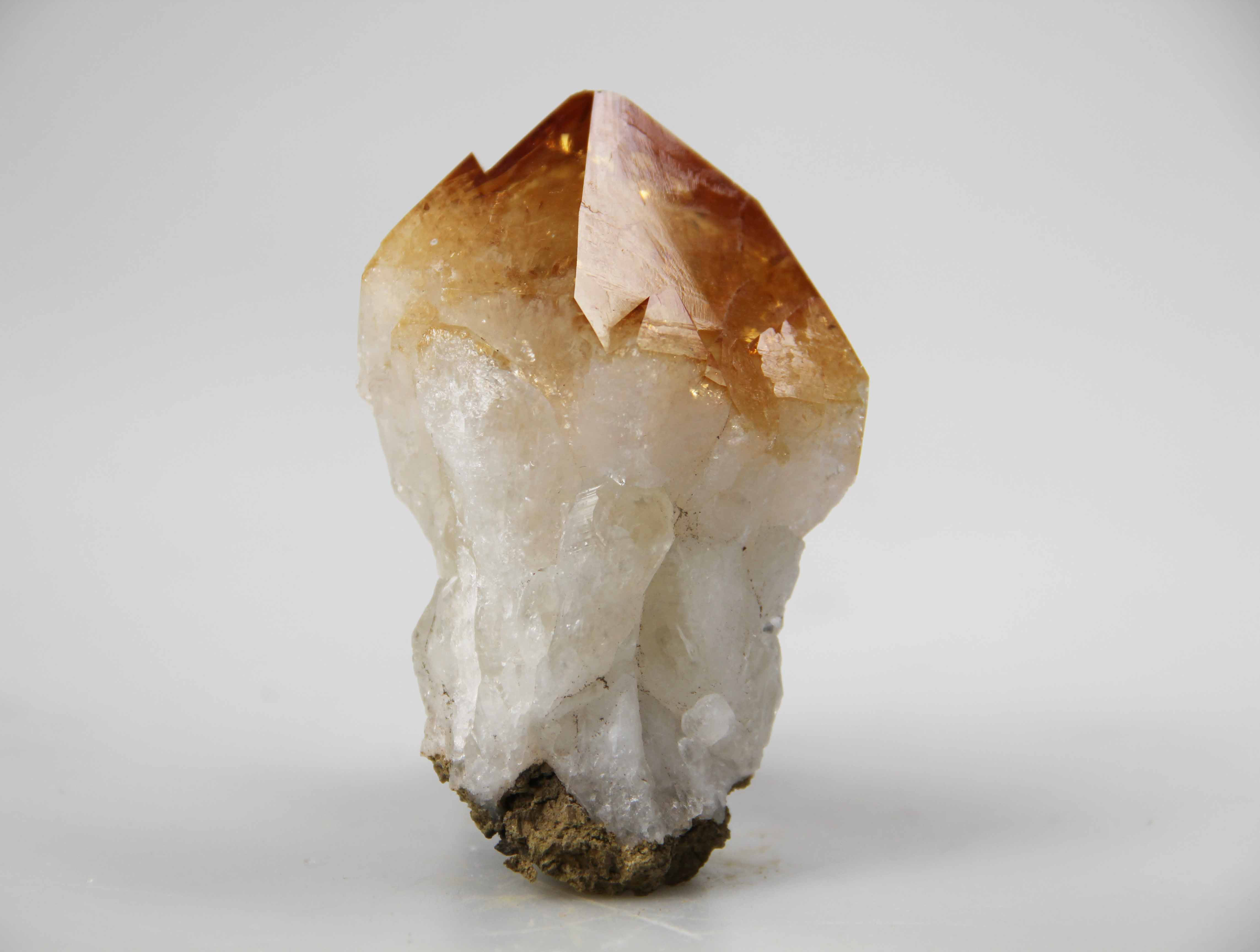
Part of a citrine crystal from the Gem-A Archives.
A second cause of citrine’s yellow colour is attributed to the structure’s traces of iron oxide. The presence of iron oxide (mainly goethite and hematite) allows for charge transfer between O2- and Fe3+ that produces an absorption and the perceived yellow colour.
Finally, citrines turn yellow after the heat-treatment of amethyst. In the strict sense, a heat-treated amethyst is not a citrine. CIBJO – The World Jewellery Confederation acknowledges the distinction between citrine and heat-treated amethyst in its Blue Books and also how they are both commercially sold as citrine. Very strictly speaking, citrine should only be of that first type, with colour caused by the presence of aluminium and a hole colour centre in its structure due to irradiation.
Citrine Occurrences and Localities
Natural citrines are a rare find. To develop a yellow colouration naturally, quartz needs to occur in a very specific environment and contain specific impurities that might explain its rarity.
Like all quartz, they form from a hot saturated silica solution, which, upon slow cooling, deposits mainly in intrusive igneous rocks like pegmatites and geodes. Localities tend to match those of smoky quartz or amethyst, which probably contain traces of radioactive elements whose radiation causes the yellow colouration of citrine (and brown colouration of smoky quartz).
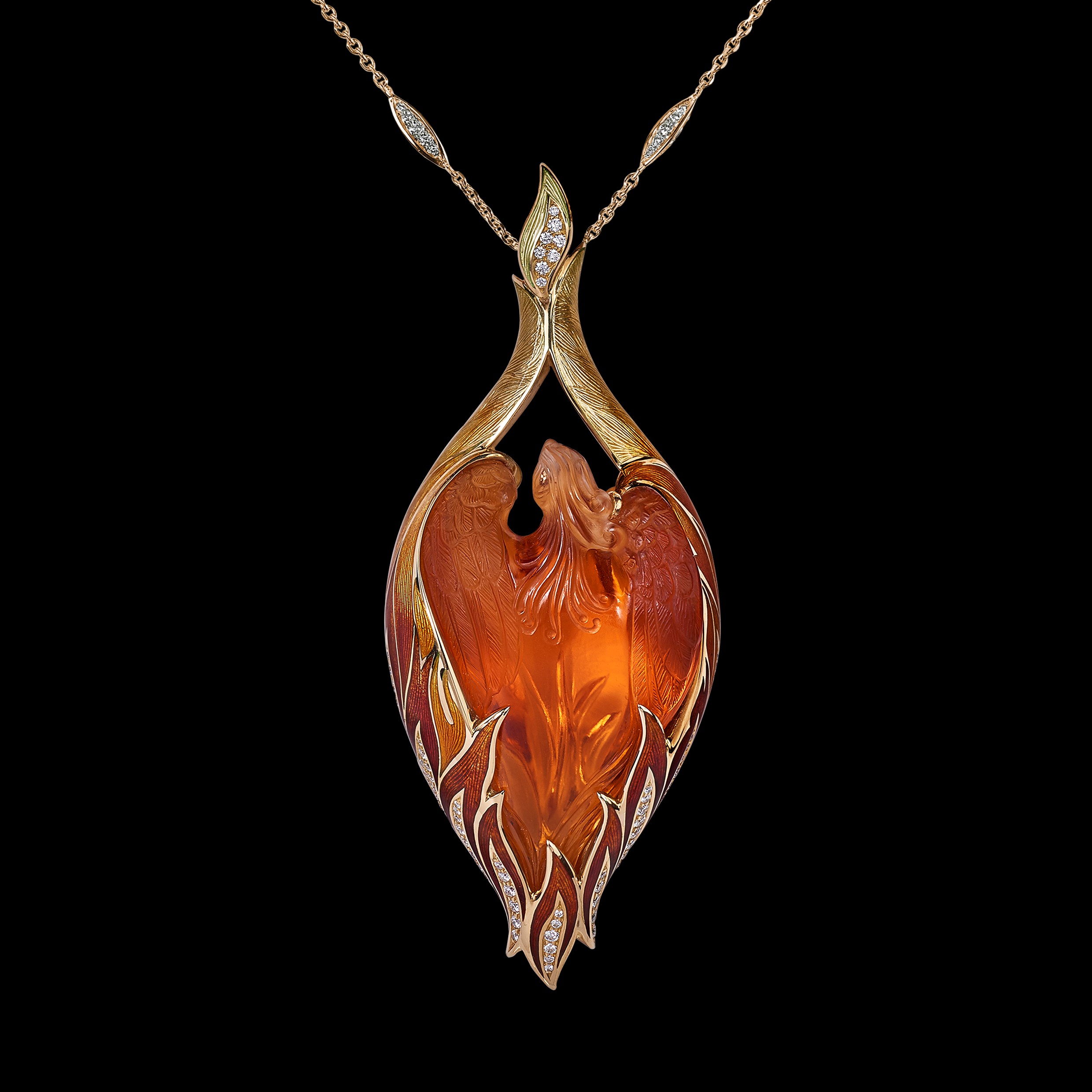
Phoenix pendant by Ingo Henn (Henn of London), set with a 56.87 carat carved citrine and decorated with orange enamel and diamonds in 18k yellow gold. Image courtesy of La Biennale Paris.
Natural citrines have been reported from Brazil, Madagascar, Spain, Norway, Russia, Bolivia (Anahi mine), the Austrian Alps, Zambia, Russia, Kazakhstan, and Australia. While these localities are sources of natural citrine, it exists in limited quantities, and most of the citrine on the market is heat-treated amethyst.
Citrine Treatments
Many amethysts, especially the lighter coloured ones mined in Brazil, are heat treated to citrine. The treatment is relatively simple and efficient. Typically, crystals can be buried in sand and heated over a fire or put in an oven to 250 to 500 degrees Celsius, depending on the type of amethyst, for up to a few hours. Note that depending on localities and temperature, and environment, the heat treatment can also discolour the amethyst before it turns yellow or rarely turns to green prasiolite.

The Jolie Citrine necklace donated to the Smithsonian by actress Angelina Jolie. The 18k yellow gold necklace features 64 graduated bezel-set, cushion-cut citrines with a 177.11-carat pear-shaped citrine drop. Discover more via KaterinaPerez.com.
If this change of colour occurs naturally in the ground during the formation of quartz, the yellow colour is, therefore, again only achieved in a very specific environment. It has been noted that natural citrine, if heat-treated over 350 degrees Celsius, can discolour, showing that this yellow colour can occur naturally and be stable only within very specific geological conditions.
Another way of obtaining a type of citrine is by irradiating colourless quartz to smoky quartz with cobalt-60 gamma, followed by heat treatment. The result is a vivid greenish-yellow coloured quartz that can be sold as Lemon quartz or Ouro Verde.
How to Test for Natural Citrine
Observation can be the first clue. Heat-treated amethyst crystals will show the same colour distribution typical of amethyst: more concentrated at the top of the crystal, less at the base. Natural citrine shows a much more even colouration throughout the crystal. Amethysts commonly bear a unique inclusion named ‘tiger stripe’ due to the very specific way they grow.

“From the Emptiness” Brazilian Citrine of 187 carats with a ‘Yin-Yang’ cut by Victor Tuzlukov on Instagram. Photograph by Dmitry Stolyarevich.
Often amethyst twins polysynthetically, according to the Brazil Law: it shows an intergrowth of right and left-handed quartz. This type of twinning can also be revealed when examining amethyst down the C-axis under polarised light. It shows symmetrical triangular patterns of dark bands known as Brewster’s fringe. Therefore, if a citrine shows a tiger stripe inclusion or a Brewster’s fringe, it can indicate treatment.
Generally speaking, natural citrine is moderately dichroic in two shades of the body colour. Heat-treated amethyst does not show any pleochroism. However, lemon quartz (heat-treated smoky quartz) would show faint dichroism, yellow and yellow-green.
Essential Information about Citrine
Chemical formula: SiO2
Colour: Yellow to orange or brownish orange
Hardness: 7
Species: Quartz
Crystal System: Trigonal
Habit: Hexagonal prism with rhombohedral terminations
RI: 1.54-1.56, birefringence: 0.009, uniaxial positive
Polariscope/Conoscope: Optically anisotropic. Can display a ‘bull’s eye’ interference figure diagnostic for quartz.
Recognising Citrine: Citrine can be confused with yellow sapphire, heliodor and topaz but is easily distinguished with standard gemmological testing.
Simulants: Coated rock crystal, glass – Citrine has been synthesised hydrothermally since the 1970s. Many synthetic citrines can be found on the market. However, they are hard to identify with traditional gemmological testing.
Pleochroism: Weak, 1-Yellow, – 2- Pale yellow
Main Image: Citrine colour zoning photographed by Pat Daly.
Author: Juliette Hibou
